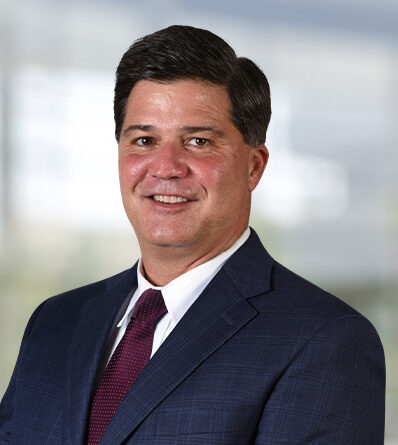Finding IP Value
PROBING QUESTIONS BY COURTS FORETOLD RULING OF PATENT INVALIDITY
By: Stephen C. Hall
U.S. Patent 6,697,730 titled “Communications and computing based urban transit system,” and owned by RideApp, was already nearing the end of its life. But in a recent case, the Federal Circuit Court of Appeals declared it deceased. Three years prior, RideApp had sued in a California District Court, alleging that Lyft’s ridesharing platform infringed the patent. However, the District Court invalidated the patent, because it agreed with Lyft’s defense that the patent was indefinite. The Federal Circuit then affirmed that decision on appeal. [1]
In judging the validity of RideApp’s very old patent, both courts applied the holding of a 2015 case styled Williamson v. Citrix Online, LLC, requiring a patent owner to identify in the patent how certain claimed functions were to be carried out.[2] This case held that when a patent claims an invention, based on reciting a function the computer performs, the scope of a claim is limited to any algorithms (and equivalents thereof) that the patent discloses.[3] By extension, a patent that claims a computer-implemented function without providing any algorithm in the performance of that function is invalid due to indefiniteness. Id.; 35 U.S.C. § 112, ¶ 2.
The Williamson case has been applied by federal courts on similar issues hundreds of times, so the opinion in the RideApp case did not break new ground. However, it bears mention in at least two respects. First, one of the claim terms in RideApp’s patent was addressed to keeping track of a customer’s usage: “a central data system for tracking passenger transportation vehicle usage and distributing periodic invoices for the usage.” During oral argument, the first of these two functions – “tracking” usage – generated an exchange right out of the gate between the panel and RideApp’s attorney: [4]
Court: “…you argue that the District Court overlooked significant algorithmic structure corresponding to the tracking function, citing to GPS-enabled computers and location technology; where in the record” did you argue that?
Counsel for RideApp: … “the GPS information is being sent to the … central data system. That’s the GPS information…. [and] it’s the central data system that is doing the tracking, and part of the algorithm for that is receiving loading or location information…. The focus of the structure is the fact that the central data system is receiving information such as information from the GPS ….”
This exchange highlights a court’s objective when functional language appears in claims, which is to ensure that patents describe how those functions are accomplished. In a computer context, “algorithm” refers to structure (or, “how”) for performing a function, in the same way a rivet might be considered structure for joining two pieces of metal. Counsel’s answer to the question, like the patent itself, was highly focused on what the central data system does – basically receiving information on usage – but very light on how the function is accomplished.
A later exchange during oral argument focused on the second function – “distributing” the invoices:
Counsel for Lyft arguing: Figure 8 [the figure from the patent then under discussion] “does not state how you would distribute the invoices in a step-by-step manner ….” as part of tracking usage and distributing the invoices.
Court: [passing the argument back to RideApp]
Counsel for RideApp: “… the other side keeps asking the question ‘how, how, how’ … [but] we do disclose how things are transmitted through utility bills and other things….”
As with the first exchange, the answer focused on what the system does – “things are transmitted” – not on how functions are accomplished. RideApp’s counsel on appeal, whose firm was not involved in obtaining the patent, faced an uphill struggle. The term “tracking” appeared throughout the claims. However, the same word appeared just one time in the remainder of the patent – which is the specification, the part that must provide a clear description for claims. Based on this word appearing often in the claims, but hardly at all in the specification, one assumes the claims were amended during prosecution to add “tracking.” Likewise, “distributing” was used liberally in the claims, but few instances of the word appeared in the patent specification. The imbalance of appearances in the claims compared to the specification was an indicator that adequate description could be lacking.
Second, RideApp filed for the patent on April 4, 2001, the patent issued on February 24, 2004, and Williamson was decided in 2015. Thus, a patent can be invalidated because of a court decision years later. There are many patents like this, for which the effects of a later case like Williamson now apply. Retrospectively, sometimes a firm must determine if a patent is likely to survive under the law that exists when the lawsuit is filed – not the law when the patent was written and granted. And, prospectively, new patents should be drafted with the proper legal framework in mind. Thus, when applying for a patent that is closely tied to computer function, it is important to describe in a number of ways “how” the computer is configured to accomplish the result – such as by providing much detail in text, flow-charts, block diagrams, and the like – and not only the result.
This post is part of a series with two other posts involving similar cases. The series culminated in a short “practical lessons” post, which can be accessed here.
[1] RideApp, Inc. v. Lyft, Inc., Case No. 2020-1284 (Fed. Cir. March 25, 2021)(on appeal from U.S. District Court for the N.D. of California, Case No. 4:18-cv-07152-JST).
[2] 792 F.3d 1339, 1346 (Fed. Cir. 2015) (en banc).
[3] See Williamson, 792 F.3d at 1347.
[4] Oral argument recording, Case No. 2020-1284, at 3:10-4:45; http://www.cafc.uscourts.gov/oral-argument-recordings?title=Lyft&field_case_number_value=&field_date_value2%5Bvalue%5D%5Bdate%5D=
[5] Id., at 25:00-26:50.
